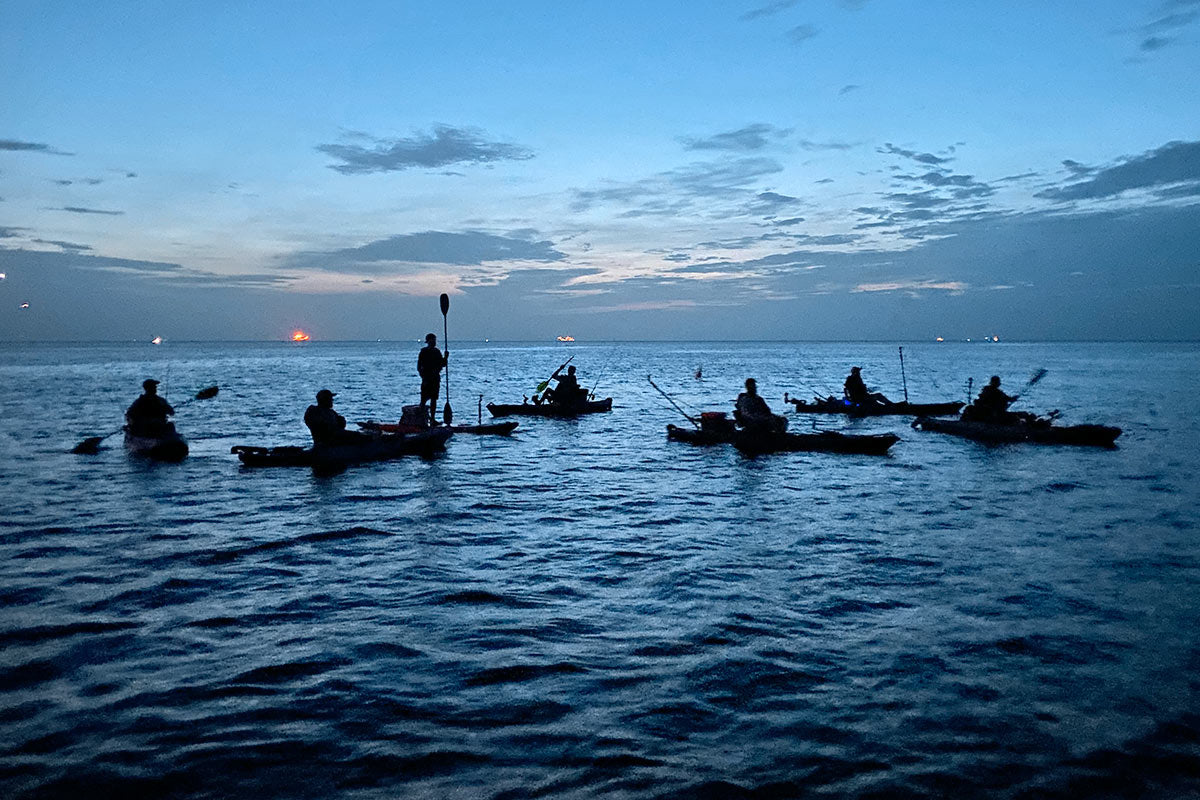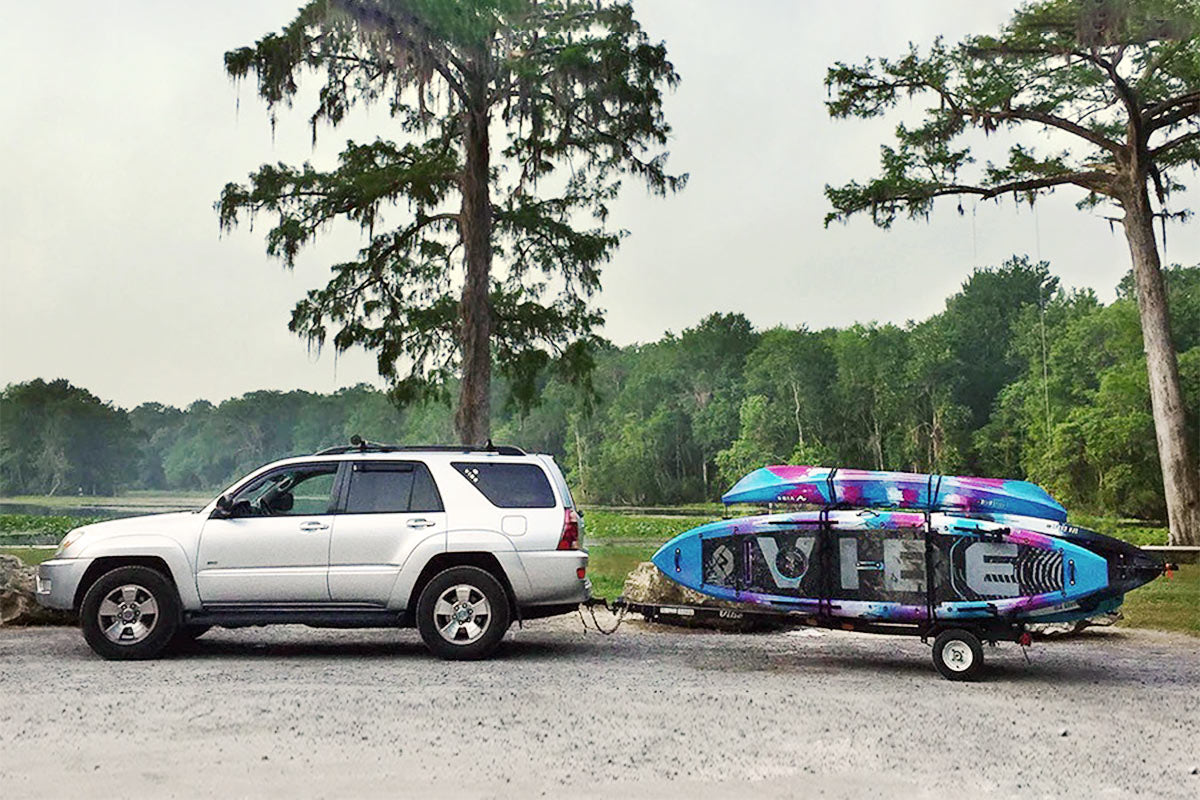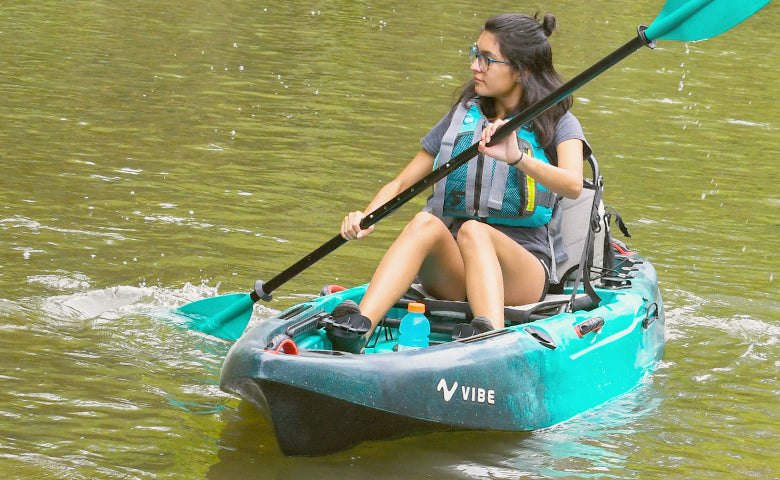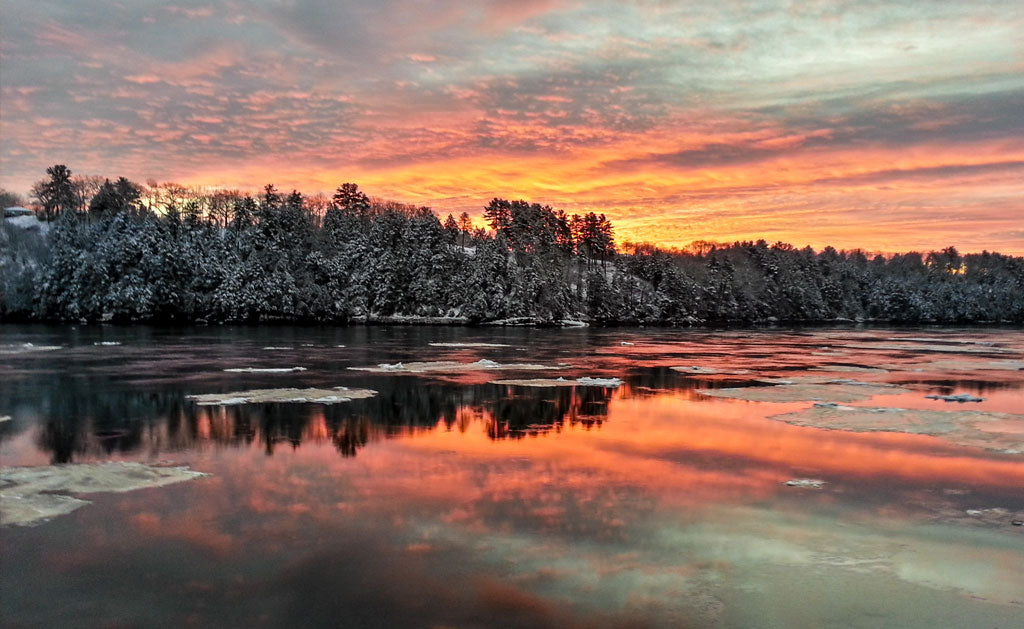How to Kayak Fish at Night

As the days get shorter and the nights come a little sooner, many of the Vibe Tribe have mentioned night kayak fishing set ups and the need for a few useful tricks. We reached out to our Pro Team to get some advice on getting the most out of your night fishing adventure.
Safety First:
As always, it’s important to wear your PFD. Zach Adkins puts this into perspective with the reminder, “you can’t see hazards as well as in daylight, other people sometimes can’t see you, and your balance is just simply not as good at night.”
We have also referenced this before in previous blogs, but always know the water you’re going on and always tell someone where you’re going. Adkins makes a great point when he reminds us that your “perception is off at night so everything seems and looks different. Knowing directions and where hazards are located can really only be done in the daylight, so know before you go at night.” And, “if you know the stretch of water you’ll be on for certain, give the person you tell as much info as possible. For example, I tell my wife, ‘I’m fishing the South Branch River tonight. My plan is to launch at the Moorefield town bridge and paddle upstream to the big pool just above and Catfish all night. If I decide to move, I will be at the big pool two holes down below the bridge.’” Or you can adopt a buddy system like Kevin Hughes, “I night fish for tarpon often, and there are a lot of things that can go wrong, so you really don't want to be by yourself.”
And since you may not be the only one out night fishing (in total darkness), being able to avoid a collision is pretty important. Adkins has a good trick, “…keep a bright flashlight on your boat. If someone is coming toward you, instead of shining it at the person, hold it over your head to illuminate your body and yak. When you shine a light right at someone, it’s hard to tell if the light is 30 or 300 feet away. If I shine my light over my body and they can see the writing on my shirt, my facial features, etc., then they know they are way to close and need to swerve.”
Packing Light…Packing Smart:
Packing light is key for night fishing. Adkins says to “be a minimalist on your fishing gear and a maxi-mist on your safety gear. Generally, at night, no matter what species I’m after, the fishing gear is much more specialized than during the day.” He said that at night he typically carries one box of tackle, two rods and extra batteries. In the same sense, the gear set-up of your kayak will be a primary focus. He also recommends you “keep everything locked down, secured, or in a hatch until you need it. Whatever the item, pull it out and use it, then put it directly back in its place. Especially if you land a giant fish, the last thing you need is stuff sprawled out everywhere.”
Jeff Jones also firmly believes it’s best to “downsize big time. If there are glass minnows around the light, I’ll use an ultra-light spinning combo with 6-8-pound braid and an 8-pound fluorocarbon leader. I'll tie on a double rig with two 1/32nd or 1/16th oz. crappie Jig Heads with a natural colored zoom tiny fluke. This rig is deadly on the big specks. It looks extremely natural. Just be sure to set a light drag and play the fish out before landing. If glass minnows aren't present around the light or there's bigger baitfish, I'll use my standard jig rod with a 1/8th oz. Jig Head paired with a ‘silver tongue devil’, or ‘Johnny goldfish’ colored Chickenboy Lure.”
Getting Lit:
Hughes wants you to make sure that you “…always know the laws in your area. A lot of people think the more lights you have the better, but in a lot of places (saltwater at least) it’s actually illegal to have certain colors and combos of lights if you aren't under power. In South Florida, you are only required to have only one 360-degree white light in saltwater.”
According to Nick Dyer, “A headlamp and a spotlight mounted to a ram ball is good, so I can point it in any direction.”
Catch the Fish:
At the end of your night/morning out, having caught some fish is the goal. In Jones’s experience, “making a long cast, getting as far out of the light as you can and bringing the lure into the strike zone” is a good strategy. He also says to “try to target the shadow lines and the dark areas outside of the light, you have a better chance of catching bigger fish.”
The most important piece of advice we got from our Pro Members. BE QUIET!! Now go out on the water at midnight and catch some fish, quietly.
- Zach Adkins
- Photo Cred: Jason Wescott




